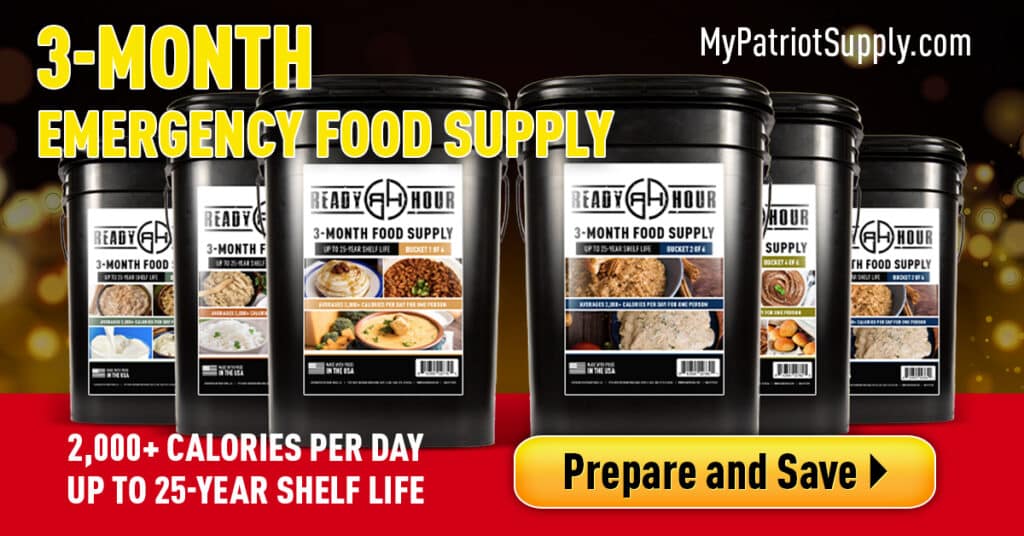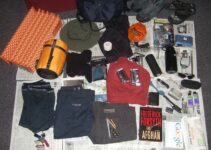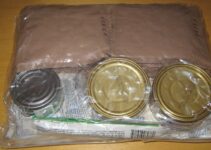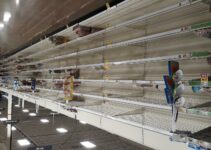Are you prepared for a financial crisis? Do you have enough food to feed your family if money is tight? An emergency food supply plan is crucial in times of financial crises. It provides a sense of security knowing that you and your family have enough to eat, even if you're unable to purchase it due to financial constraints.
In this article, we will provide a comprehensive guide to creating an emergency food supply plan for financial crises. We'll cover the different types of emergency food supplies, how to calculate how much food to stockpile, how to store emergency food supplies, and meal and snack ideas. We'll also discuss how to access emergency food supplies, budgeting for emergency food supplies, and other considerations to keep in mind.
Understanding Emergency Food Supplies
An emergency food supply is a stockpile of food that you keep on hand in case of an emergency, such as a natural disaster or financial crisis. It ensures that you have access to food even if you are unable to purchase it due to financial constraints.
Canned Goods
Canned goods are a common choice for emergency food supplies. They are affordable, have a long shelf life, and are widely available. However, canned goods can be heavy and bulky, making them difficult to transport in case of an emergency. They also tend to be high in sodium, which may not be suitable for people with certain health conditions.
Freeze-Dried Foods
Freeze-dried foods are another option for emergency food supplies. They are lightweight, have a long shelf life, and can be easily transported. However, freeze-dried foods can be expensive and may not be as widely available as canned goods.
Non-Perishable Items
Non-perishable items such as rice, pasta, and cereal are also good options for emergency food supplies. They are affordable, have a long shelf life, and are easy to store. They also tend to be more versatile than canned goods or freeze-dried foods. However, they may not provide all the necessary nutrients that a person needs in a crisis.
Advantages and Disadvantages of Each Type of Food Supply for Financial Crises
When deciding what type of food supply to purchase, it is important to weigh the advantages and disadvantages of each type. Canned goods are affordable and widely available, but they can be heavy and high in sodium. Freeze-dried foods are lightweight and easy to transport, but they can be expensive. Non-perishable items are versatile and easy to store, but they may not provide all the necessary nutrients. Choose the type of food supply that best fits your needs and budget.
Calculating How Much Food to Stockpile
The amount of food you need will depend on the number of people in your household and how long you want your food supply to last.
Number of Days' Worth of Food to Have on Hand
Experts recommend having at least three days' worth of food on hand in case of an emergency. Aim for at least two weeks' worth of food, if possible. This will provide a cushion in case the emergency lasts longer than anticipated.
How to Calculate Food Needs Based on the Number of People in Your Household
To calculate how much food you need, determine the number of people in your household. Then, multiply that number by the number of meals per day and the number of days you want your food supply to last. For example, if you have four people in your household and want your food supply to last for two weeks, you will need to stockpile 84 meals.
Factoring in Nutritional Needs When Stockpiling Food
When stockpiling food, aim for a variety of foods that provide a balance of nutrients, including protein, carbohydrates, and healthy fats. Look for foods that are low in sodium, sugar, and saturated fats. Consider adding multivitamins to your emergency food supply to ensure that you are getting all the necessary nutrients.
Section Above: Calculating How Much Food to Stockpile
Section Below: Storing Emergency Food Supplies
| Type of Emergency Food Supply | Advantages | Disadvantages |
|---|---|---|
| Canned Goods | Affordable and widely available | Heavy and high in sodium |
| Freeze-Dried Foods | Lightweight and easy to transport | Expensive and may not be as widely available as canned goods |
| Non-Perishable Items | Versatile and easy to store | May not provide all the necessary nutrients |
When storing emergency food supplies, it is important to ensure that they remain safe to eat and do not spoil. Store emergency food supplies in a cool, dry place, away from direct sunlight. A pantry or basement is an ideal location. Avoid storing food in garages or attics, as these areas can become too hot or humid. To prevent food from spoiling, it is essential to rotate your stock regularly. Use the first in, first out (FIFO) method, where you use the oldest food first and replace it with new food. Check expiration dates regularly and replace any food that has expired. It is best to use food before its expiration date, as this ensures that it is still safe to eat. Different types of emergency food supplies require different storage methods. Canned goods can be stored at room temperature, whereas freeze-dried foods may require a cool, dry place. Follow the instructions on the packaging to ensure that you are storing your food correctly.
Storing Emergency Food Supplies
Storing emergency food supplies properly is essential to ensure that they remain safe to eat and do not spoil.
Tips for Storing Food in a Cool, Dry Place
Store emergency food supplies in a cool, dry place, away from direct sunlight. A pantry or basement is an ideal location. Avoid storing food in garages or attics, as these areas can become too hot or humid.
Rotating Stock to Prevent Spoilage
To prevent food from spoiling, it is essential to rotate your stock regularly. Use the first in, first out (FIFO) method, where you use the oldest food first and replace it with new food.
Checking Expiration Dates Regularly
Check expiration dates regularly and replace any food that has expired. It is best to use food before its expiration date, as this ensures that it is still safe to eat.
How to Store Different Types of Emergency Food Supplies
Different types of emergency food supplies require different storage methods. Canned goods can be stored at room temperature, whereas freeze-dried foods may require a cool, dry place. Follow the instructions on the packaging to ensure that you are storing your food correctly.
Meal and Snack Ideas
Creating meals and snacks from emergency food supplies can be challenging, but it is essential to ensure that you are getting the necessary nutrients.
Simple Recipes That Can Be Made with Canned Goods
Canned goods can be used to create a variety of simple recipes, such as chili, soup, and pasta dishes. Look for recipes that use canned vegetables, beans, and fruits.
Ideas for Using Freeze-Dried Ingredients in Creative Ways
Freeze-dried ingredients can be used to add flavor and nutrition to meals. Try adding freeze-dried fruits to oatmeal or cereal, or using freeze-dried vegetables in soups and stews.
Creating Balanced Meals from Emergency Food Supplies
To create balanced meals, aim for a variety of foods that provide a balance of nutrients. Include protein, carbohydrates, and healthy fats in each meal. Look for recipes that use a variety of ingredients, such as rice and beans or pasta with vegetables.
Including Variety in Meals with Emergency Food Supplies
To include variety in meals, try using different spices and seasonings. Look for recipes that use a variety of ingredients, such as different types of beans or vegetables.
Accessing Emergency Food Supplies
In some cases, it may be necessary to access emergency food supplies outside of your own stockpile.
Information on Where to Go to Access Food Banks or Other Resources in Their Community
Food banks and other resources are available in most communities. Check with local organizations or government agencies to find out where these resources are located.
Finding Out If You Are Eligible for Food Assistance Programs
Many food assistance programs have eligibility requirements. Check with the program to find out if you are eligible.
Creating a Plan for Accessing Emergency Food Supplies in a Crisis
Creating a plan for accessing emergency food supplies in a crisis is essential. Identify the resources that are available in your community and determine how to access them if necessary.
Budgeting for Emergency Food Supplies
Budgeting for emergency food supplies is essential to ensure that you have enough food on hand in case of an emergency.
Prioritizing Food Purchases in Your Budget
When budgeting for emergency food supplies, prioritize food purchases over other expenses. Look for ways to cut back on non-essential expenses, such as dining out or entertainment.
Finding Deals and Discounts on Non-Perishable Food Items
Look for deals and discounts on non-perishable food items. Consider buying in bulk or using coupons to save money.
Creating a Budget Specifically for Emergency Food Supplies
Create a budget specifically for emergency food supplies. Determine how much you can afford to spend each month and allocate funds accordingly.
Other Considerations
There are several other considerations to keep in mind when creating an emergency food supply plan.
Preparing for and Handling Power Outages
In case of a power outage, it is essential to have alternative methods for cooking and heating food. Consider purchasing a camp stove or grill, and stockpile fuel for these items.
Preparing for and Handling Water Shortages
In case of a water shortage, it is essential to have access to clean water. Stockpile water or invest in a water filtration system.
Handling Food Allergies or Dietary Restrictions in a Crisis
If you or a family member has a food allergy or dietary restriction, it is essential to stockpile foods that are safe to eat. Consider purchasing gluten-free or dairy-free options, or stockpiling foods that are free from common allergens.
Real-Life Case Study: The Importance of Emergency Food Supplies
In 2017, Hurricane Maria hit Puerto Rico, leaving millions without power, water, and access to food. Maria, a resident of San Juan, was one of them. For days, she had to rely on her emergency food supply, which she had stocked up on just a few weeks before the storm hit.
Maria had followed the advice of a friend and had started to prepare for emergencies. She had calculated how much food her family would need for a week and had bought non-perishable items such as canned goods, pasta, rice, and beans. She had stored the food in a cool and dry place and had made sure to rotate her stock regularly.
When the hurricane hit, Maria's home was damaged, and her family was left without power and water. But thanks to her emergency food supply, they were able to stay fed and healthy until help arrived.
Maria's story highlights the importance of having an emergency food supply for financial crises. It shows how being prepared can make a difference in a crisis and how having enough food can help families stay safe and healthy during difficult times.
Conclusion
Having an emergency food supply for financial crises is essential. By following the tips and guidelines outlined in this article, you can create an emergency food supply plan that works for you and your family. Remember to take action and start preparing now for any potential emergencies. Additional resources for creating an emergency food supply plan are available from government agencies and non-profit organizations.
Insider Tip: Don't forget to periodically check your emergency food supply and update it as necessary. Also, consider adding comfort foods to your stockpile to help alleviate the stress of an emergency situation.
The author of this guide is a certified emergency preparedness specialist with over a decade of experience in the field. They have worked with various organizations and government agencies to develop emergency plans and provide training on disaster preparedness. With a deep understanding of the impact of financial crises on food security, the author has dedicated their career to helping individuals and families prepare for emergencies.
As a recognized expert, the author has conducted extensive research on emergency food supplies, including studies on nutritional requirements, food storage methods, and budgeting strategies. They have also worked with food banks and other community resources to understand the challenges and limitations of accessing emergency food supplies.
The author's approach to emergency food preparation is practical and realistic, with a focus on providing actionable advice that can be implemented by anyone, regardless of their budget or level of experience. They believe that everyone has the ability to prepare for emergencies and that a little planning can go a long way in ensuring that individuals and families are able to weather financial crises with confidence.





